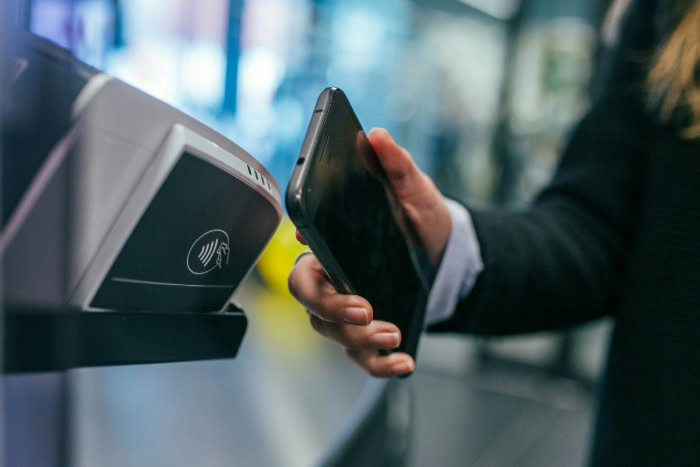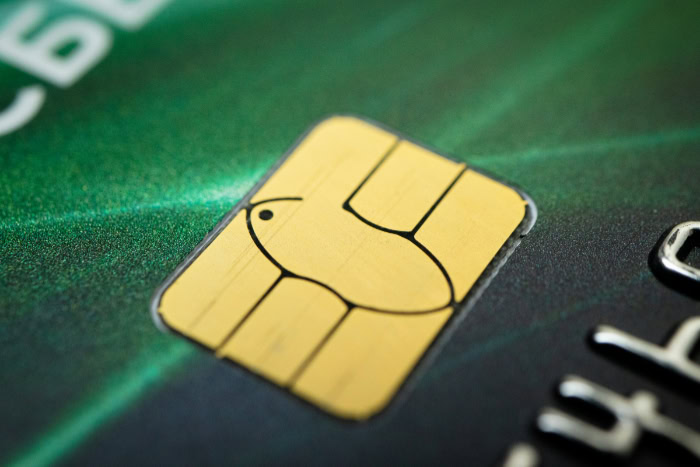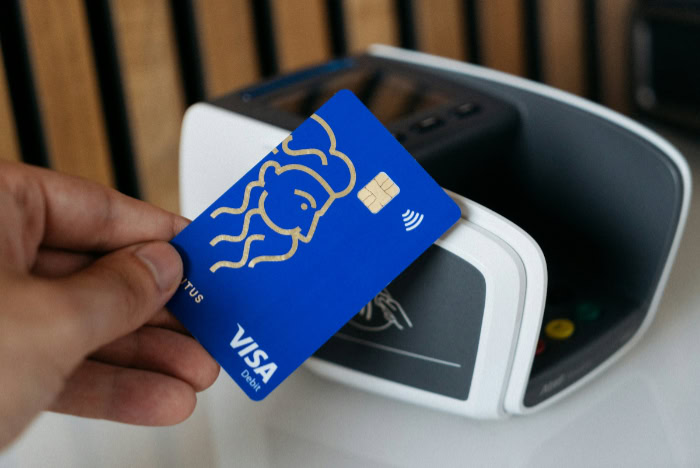What Is NFC and How Does It Work? Technology Behind the Tap

Paying with a quick tap of your phone, sharing a playlist between friends in seconds, or setting your lights to turn on as soon as you step inside-these moments are made possible by NFC. As more devices and services embrace this technology, everyday tasks become smoother and more secure.
What exactly powers these seamless connections, and why do so many modern conveniences rely on them?
What Is NFC?
Near Field Communication, commonly known as NFC, is a technology designed for wireless communication between devices placed very close to each other, typically within a range of four centimeters. Originating as an evolution of RFID technology, NFC allows for two-way data exchange, making it ideal for quick, secure interactions between devices.
Unlike more traditional wireless technologies that require pairing or searching for connections, NFC interactions happen almost instantly, simply by bringing two enabled devices into proximity.
NFC’s appeal comes from its simplicity and fast, seamless operation. Instead of dealing with passwords or lengthy connection processes, users just tap or bring devices together.
As a result, daily tasks like making payments, unlocking doors, and sharing information can be completed in seconds. NFC technology has become a foundational part of many emerging solutions in personal convenience, business efficiency, and even public transport access.
Main Features
Operating at a frequency of 13.56 MHz, NFC stands out because it supports secure communication in three distinct modes. Each mode serves different practical needs, enhancing versatility.
Card emulation mode allows a device, such as a smartphone, to behave like a contactless card for payments or access control. Peer-to-peer mode enables two devices to exchange information directly, which is handy for sharing contacts or files with a simple tap.
Reader/writer mode is often used for interacting with passive NFC tags, such as scanning a smart poster to receive information or trigger specific actions on a device.
Unlike its RFID predecessor, which traditionally sends information in only one direction, NFC’s two-way communication capability means devices can exchange data, not just read it. This enables a broader range of applications, from secure financial transactions to a host of creative, automated routines in daily life.
How NFC Technology Works

Bringing two devices together and seeing them communicate instantly may seem almost magical, but NFC uses some fascinating science to make it all possible. Behind every seamless tap or data transfer is a carefully engineered process involving electromagnetic fields and smart device design.
NFC’s focus on proximity, energy efficiency, and simplicity shapes how it works and why it feels so effortless to use in daily life.
Technical Components
The foundation of NFC lies in electromagnetic induction. When an NFC-enabled device, like a smartphone, comes within a few centimeters of another NFC component, a magnetic field is created.
This field can transmit data and, in some cases, even supply power to the other device involved in the exchange. For instance, passive devices such as NFC tags do not have their own power source.
Instead, they draw the necessary energy from the electromagnetic field generated by an active device, such as a smartphone or payment terminal. Active devices are fully powered and capable of both sending and receiving information, while passive devices are limited to transmitting information stored on them.
This active-passive relationship allows for extremely versatile usage scenarios. Active devices can initiate communication, perform complex interactions, and read or write data.
Passive NFC tags, on the other hand, are often used for simple tasks like sharing Wi-Fi details or launching a specific app, requiring no battery maintenance or recharging.
Data Transfer Process
NFC communication begins as soon as two compatible devices are brought within roughly four centimeters of each other. Once in close proximity, the devices establish a secure channel for exchanging information.
Each transaction is designed to be quick, minimizing the risk of interception or unauthorized access.
Security is a central focus for NFC, especially for sensitive actions such as payments or personal data transfers. Encryption protocols are commonly used to protect information as it passes between devices.
Depending on the application, additional layers of authentication and data encryption may be applied to ensure that only authorized actions take place. This combination of proximity-based initiation and robust security measures makes NFC an appealing option for a wide range of applications where speed and safety matter.
Common Applications

NFC’s ability to enable swift, contactless communication between devices has inspired a wave of practical solutions that simplify everyday life. With just a tap, users can pay for a coffee, unlock a hotel room, automate routines, or pair their favorite headphones.
As more devices and services integrate NFC, its presence becomes more noticeable in daily routines, providing greater convenience and efficiency.
Contactless Payments
Shopping and paying for services have become much faster with the adoption of NFC. Popular mobile payment platforms such as Apple Pay and Google Wallet allow users to complete transactions by simply holding their phone or smartwatch near a compatible terminal.
Many credit and debit cards now come with embedded NFC chips as well, enabling “tap-to-pay” features that eliminate the need to swipe or insert a card. High security standards, including tokenization and encryption, make these transactions not only quick but also secure, encouraging widespread use in retail and hospitality.
Smart Automation
NFC goes beyond payments to enhance productivity and efficiency at home and work. Small, inexpensive NFC tags can be programmed to automate daily tasks.
For instance, placing a tag by your entrance can trigger your phone to enable Wi-Fi, silence notifications, or even open certain apps as soon as you arrive home. Offices can use similar tags to simplify check-ins, manage meeting room access, or distribute digital business cards instantly.
These simple automations reduce repetitive tasks and help streamline routines with minimal effort.
Transportation and Access
Getting around cities or gaining entry to secure locations has never been easier thanks to NFC. Metro and bus cards often rely on NFC technology to store fares and grant access with a swift tap at a gate or reader.
Many hotels have switched to NFC-based keycards, providing guests with effortless entry to their rooms. NFC is also behind digital event tickets, allowing attendees to access concerts, conferences, or sports events quickly and securely, all from a smartphone or wearable device.
Device Pairing
Setting up new devices or establishing connections used to be a hassle, often requiring multiple steps and lengthy codes. NFC simplifies this process dramatically.
Pairing Bluetooth headphones, speakers, or even printers can be as easy as tapping them together with your phone. The NFC connection passes configuration details quickly, letting users start enjoying their devices almost instantly without fuss.
This kind of frictionless pairing is especially valuable for gadgets that do not have screens or complex input methods.
Benefits and Limitations

NFC’s blend of simplicity and security has made it a popular choice for many modern devices and services. As its adoption grows, both the advantages and challenges of NFC become important to consider.
From streamlining payments to powering smart automation, NFC shapes daily habits in convenient ways, yet it also presents certain limitations that users and developers must keep in mind.
Advantages
One of the most appealing strengths of NFC is its approach to security. Communication occurs only when devices are very close together, which greatly reduces the risk of data being intercepted by someone standing nearby.
Many NFC-based applications, especially those handling payments or access control, use encryption and other safeguards to make unauthorized access extremely difficult.
Convenience is another major benefit. With just a single tap or touch, users can complete transactions, share information, or trigger automated routines.
This “one-tap” experience eliminates unnecessary steps, saving time and reducing friction in everyday interactions. The technology also excels at energy efficiency.
Passive NFC tags, for instance, require no batteries at all and draw the small amount of power they need directly from the electromagnetic field generated by an active device. This makes NFC ideal for low-maintenance solutions, like stickers or cards, that can be placed almost anywhere and used for years.
Challenges
Despite its strengths, NFC is not without drawbacks. One significant limitation is its extremely short range, which means it cannot be used for communications over any significant distance.
While this short range adds a layer of security, it also means users must be precise when tapping devices together or interacting with NFC tags.
Hardware support is another consideration. Both the device initiating the NFC communication and the one receiving it must include compatible hardware.
Older devices and certain budget models may not have NFC chips, placing restrictions on who can use the technology and for what purposes.
Data security, while generally strong, can present concerns with unsecured or poorly configured NFC tags. If a tag is left unprotected, there is a potential risk of tampering.
An attacker could reprogram such tags for malicious purposes, such as redirecting a user to a harmful website or triggering unwanted actions on a device. For these reasons, security settings and awareness remain important when deploying NFC for sensitive applications.
Conclusion
NFC has quietly transformed how people interact with technology, making countless tasks faster, easier, and more secure. From quick payments to effortless device pairing, its short-range wireless communication powers some of the most convenient features found in modern devices.
As more services, gadgets, and environments take advantage of NFC, its influence continues to grow across daily routines and smart technology solutions.
The blend of security, low power use, and instant connection places NFC at the center of a more seamless digital experience. Its simplicity masks the sophisticated technology working behind the scenes, allowing users to benefit from intuitive actions like tapping a card or phone.
Exploring NFC-enabled options-whether for payments, automation, or secure access-can open new opportunities to streamline and enhance everyday living. As technology continues to evolve, NFC’s promise of quick, reliable connections is set to play an even greater role in shaping future interactions.


